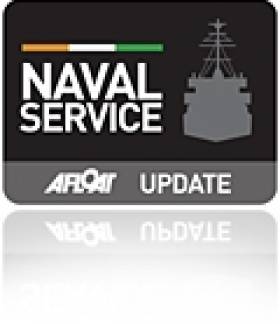Displaying items by tag: Decommissioned Aoife
Naval Service’s Longest Serving Vessel L.É. Aoife Decommissioned
#Decommissioned – Naval Service OPV LÉ Aoife (P22), the longest-serving vessel in the fleet has been decommissioned at a special ceremony yesterday in Waterford City, reports RTE News.
In 35 years of service to the State she travelled in excess of 600,000 nautical miles, an equivalent of circumnavigating the globe 28 times, and her crew has boarded over 4,700 vessels at sea and detained over 440 fishing vessels.
During her service L.É Aoife was involved in numerous successful operations, primarily involving her role as a fishery protection vessel, but also search and rescue missions, most notably, the recovery in 1985 of the black box from Air India Flight 182 off the south west coast.
She departed Dublin Port on a farewell call during the week to her adopted homeport where the decommissioning ceremony took place. For more coverage by RTE click HERE.
Afloat.ie adds like her predecessor, L.E. Emer (P21) sold at auction in 2013, they were deployed on re-supply missions to Irish troops serving overseas with the United Nations in particular Lebanon.
The second of a trio of 'Emer' class offshore patrol vessels (OPV) she was built by Verolme Cork Dockyard and each of the 65m OPV's had a crew compliment of 46 (5 officers).
Now that the 'Aoife' has bowed out this leaves L.E. Aisling (P23) as the surviving sister to soldier on in the current reduced fleet of seven ships.
A pair of replacement newbuilds of the OPV90 'Beckett' class are on contract from Babcock Marine in the UK.
A date for Aoife's auction has yet to be confirmed. Her successor James Joyce is due for delivery in March this year.
The final and as yet to be announced name for the third newbuild is to enter service in 2016.





























































